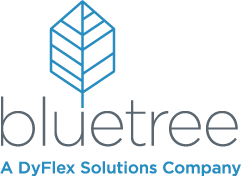SAP Data Warehouse Cloud
Filter By
Browse By
- SAP Analytics and AI
- SAP Application Development and Integration
- All SAP Application Development and Integration
- SAP ABAP
- SAP ABAP Development Tools
- SAP ABAP Test Cockpit
- SAP API Management
- SAP BAPI
- SAP Basis
- SAP BRF
- SAP Business Application Studio
- SAP CMS
- SAP Design Studio
- SAP Development Tools
- SAP DevOps
- SAP EAI
- SAP EDI
- SAP Extension Suite
- SAP Fiori
- SAP Fiori Elements
- SAP Integration Suite
- SAP Low Code Application Development
- SAP Low Code Automation
- SAP Netweaver
- SAP Release Management
- SAP UI5
- SAP Web Application Server
- SAP Web IDE
- SAP Business Process Management
- SAP Center of Excellence
- SAP CIO
- SAP Customer Experience
- SAP Data and Data Management
- All SAP Data and Data Management
- SAP BW
- SAP BW/4HANA
- SAP Crystal Reporting
- SAP Data Archiving
- SAP Data Center
- SAP Data Governance
- SAP Data Integration
- SAP Data Migration
- SAP Data Quality
- SAP Data Services
- SAP Data Strategy
- SAP Data Visualization
- SAP Data Warehouse Cloud
- SAP DMS
- SAP Document Control
- SAP EIM
- SAP ETL
- SAP ETL Tools
- SAP HANA
- SAP HANA Administration
- SAP HANA Deployment Infrastructure
- SAP HANA Studio
- SAP Master Data
- SAP Master Data Governance
- SAP MDM
- SAP Enterprise Architect
- SAP Enterprise Asset Management
- SAP ERP
- SAP Finance
- All SAP Finance
- SAP Accounting
- SAP AR AP
- SAP Asset Accounting
- SAP Billing Systems
- SAP BPC
- SAP BRIM
- SAP Cash Management
- SAP Central Finance
- SAP Controlling
- SAP COPA
- SAP Cost Center Accounting
- SAP e-invoicing
- SAP FICO
- SAP Finance Automation
- SAP Financial Closing Cockpit
- SAP Financial Consolidation
- SAP Financial Planning
- SAP FX Risk
- SAP General Ledger
- SAP Global Tax Management
- SAP Hyperion
- SAP Order to Cash
- SAP Payment Processing
- SAP Profitability Analysis
- SAP Rebate Management
- SAP S/4HANA Finance
- SAP Universal Journal
- SAP Governance Risk and Compliance
- SAP Human Capital Management
- SAP Intelligent Technologies
- SAP Platform and Technology
- All SAP Platform and Technology
- SAP Business Technology Platform
- SAP Cloud Connector
- SAP Cloud Integration Platform
- SAP Cloud Migration
- SAP Cloud Platform
- SAP Cloud Providers
- SAP Cloud Strategy
- SAP Container Platform
- SAP Digital Asset Management
- SAP Digital Integration Hub
- SAP Digital Signature
- SAP HANA Enterprise Cloud
- SAP HEC
- SAP Hyperscalers
- SAP Infrastructure
- SAP Messaging
- SAP Smart Forms
- SAP Quality and Testing
- SAP Security
- SAP Spend Management
- SAP Supply Chain Management
- All SAP Supply Chain Management
- SAP APO
- SAP Asset Management
- SAP Business Network
- SAP Digital Manufacturing Cloud
- SAP Digital Twin
- SAP EWM
- SAP IBP
- SAP Inventory Management
- SAP Label Printing
- SAP Logistics
- SAP Manufacturing
- SAP Manufacturing Automation
- SAP MES
- SAP MII
- SAP MM
- SAP MRO
- SAP MRP
- SAP Order Management
- SAP Plant Maintenance
- SAP PLM
- SAP Production Planning
- SAP S&OP
- SAP SD
- SAP SPM
- SAP Supply Chain Planning
- SAP Track and Trace
- SAP Transportation Management
- SAP System Administration
SAP Data Warehouse Cloud — Foundation for Today’s Analytics
Data warehouses have been staples of enterprise analytics and reporting for decades. Many SAP customers have been using SAP’s on-premise data warehouse solution, SAP Business Warehouse (SAP BW). With mainstream maintenance set to end for SAP BW 7.5 in 2027, many SAP BW customers have been moving to SAP BW/4HANA.
Yet, these popular data warehouses aren’t designed to handle today’s burgeoning data of increasingly different types that reside in diverse data stores across the world in company data centers, and private and public cloud.
SAP Data Warehouse Cloud — Foundation for Today’s Analytics
Data warehouses have been staples of enterprise analytics and reporting for decades. Many SAP customers have been using SAP’s on-premise data warehouse solution, SAP Business Warehouse (SAP BW). With mainstream maintenance set to end for SAP BW 7.5 in 2027, many SAP BW customers have been moving to SAP BW/4HANA.
Yet, these popular data warehouses aren’t designed to handle today’s burgeoning data of increasingly different types that reside in diverse data stores across the world in company data centers, and private and public cloud.
Cloud Data Warehousing has brought a revolution to the space. With the cloud, data warehouses are not constrained by physical data space and can scale up and down to meet requirements. They can also meet the demand for rapid access to analytics by business users in various formats.
While there are many cloud data warehouses, SAP rolled out a unique bundled solution that combines many aspects of the data infrastructure in a well-integrated manner. Watch this video presentation from SAP to learn about the evolution of SAP’s data warehousing — The future of data warehousing.
SAP Data Warehouse Cloud combines data and analytics solutions in the cloud. It is a software-as-a-service (SaaS) that includes database, data warehouse, data integration, and analytics, all built on the SAP HANA Cloud database.
There are four main challenges that organizations have faced when it comes to data management, warehouse, and analytics solutions: scalability, complexity, ease of use, and business semantics — as outlined in this expert article.
SAP solves these challenges with these key features of the SAP Data Warehouse Cloud:
- Connect data across multi-cloud and on-premise repositories in real time to SAP or third-party analytics solutions such as Qlik,
- Empower users with a no-code environment to connect, model and visualize data.
- Analyze all types of structured, unstructured, and geospatial data with in-memory speed.
- Accelerate implementation with pre-integrated database, data warehouse, data intelligence, data lake, and analytics capabilities.
- Reuse existing BW models, transformations, and customizations with the BW bridge option.
What can current SAP BW or SAP BW/4HANA customers do? They can choose to move their data to SAP Data Warehouse Cloud and run it on various cloud solutions such as NetApp, AWS, Google Cloud, and Microsoft Azure. Alternatively, they can just have SAP Data Warehouse Cloud consume the datasets directly from SAP BW/4HANA. They can also deploy a hybrid model and leave some data on premise in SAP BW/4HANA and put some data in the cloud in SAP Data Warehouse Cloud.
Data architects must carefully assess the pros and cons — business needs, costs, technical requirements, risk — to identify the future of their data warehousing. This article can get you started on building an agile data platform with SAP Data Warehouse Cloud.
14 results
-

- SAP Data Warehouse Cloud
 Premium
Premium
SAP Partners with Google Cloud to Bring AI to Datasphere
Published: 18/September/2023
Reading time: 3 mins
SAP announced that it is partnering with Google Cloud to enhance its generative AI offerings, focusing initially on the automotive sector to advance sustainability performance. Leveraging the strength of SAP Datasphere and Google Cloud Vertex AI, the collaboration aims to facilitate the development and training of generative AI models using data from Catena-X, an open…
-

5 Ways SAP Data Warehouse Cloud Can Enhance Executive Decision-making
Published: 12/April/2023
Reading time: 1 mins
In today’s data-driven business landscape, integrating digital solutions has become crucial to maintaining a competitive edge. However, implementing new technologies can be daunting due to the associated high costs and potential issues with accessibility and scalability. The advent of cloud-based SaaS technology has revolutionized business operations, providing quick deployment and easy access via a web…
-

- SAP Data Warehouse Cloud
 Premium
Premium
Getting started with data warehouse cloud
SAP's advanced data warehouse, SAP Data Warehouse Cloud is SAP's latest technology driving advanced data management for analytics. A cloud-based system, SAP Data Warehouse Cloud, offers a new paradigm for taming data chaos in your enterprise by bringing many data sources together into a smoothly function data store, ready for advanced analytics. Attend this comprehensive…
-
-

- SAP Data Warehouse Cloud
 Premium
Premium
The future of data warehousing
The practice of managing data for the next generation of analytics is rapid evolving. Advanced techniques of combining multiple data sources into a single data fabric, managing user privileges and communities, and data sharing throughout the cloud offer new capabilities and new risks in delivering data in the cloud. Mastering SAP Premium Access Membership Required You…
-

- SAP Data Warehouse Cloud
 Premium
Premium
SAP Data Warehouse Cloud and SAP Analytics Cloud: Better Together
SAP Data Warehouse Cloud and SAP Analytics Cloud represent the future of SAP Analytics solutions. In this session, SAP Product Evangelist and Expert Ingo Hilgefort will discuss why and how you will want to run both solutions together. You will understand the value of a truly unified data and analytics offering for your organization. Key…
-

- SAP Data Warehouse Cloud
 Premium
Premium
SAP data warehouse cloud – an introduction
SAP Data Warehouse Cloud is SAP’s public cloud data warehouse offering, with integrations into SAP ERP, SAP S/4HANA, SAP BW/4HANA and many other SAP Applications out of the box. In this introduction session, attendees will receive an overview on the role of SAP Data Warehouse Cloud as part of the overall data warehouse strategy and…
-

Build an Agile Data Platform with SAP Data Warehouse Cloud
Published: 26/January/2021
Reading time: 7 mins
Data is the foundation for the reporting and analytics that are required to support decisions throughout an organization, and businesses need a way to enable access to this data from a variety of heterogeneous locations across their landscapes. This is where data warehouses come in, by serving as a central location of consolidated data. To…
-
-

- SAP Data Warehouse Cloud
 Premium
Premium
Achieve Business Outcomes Faster by Empowering Business Users with SAP Data Warehouse Cloud
This session provides guidance you can use to empower your business users with self-service analytics and data modeling. You will learn how SAP Data Warehouse Cloud and SAP Analytics Cloud allow line of business users to get insight quickly, build stories and collaborate by sharing data and objects. Find out how you can provide your…
-

Data Warehouse Overhaul Helps Helvetia Simplify Reporting and Analytics for HR — to Start
Published: 08/January/2021
Reading time: 6 mins
Data warehouses serve as a central repository for information coming from multiple internal and external sources, enabling businesses to perform reporting and analytics and turn data into insights. For a company like Helvetia Group, which has been insuring products ranging from private and occupational pensions to liability, motor vehicle, transport, and property insurance for more…
-

Take Your Data Warehouse to the Next Level
Published: 05/November/2020
Reading time: 6 mins
To make good use of all the data streaming in from internal and external sources, companies must be able to organize and store that data in a way that enables optimal analysis, so that they can make the right business decisions. This is where data warehouses come in, which serve as a central repository of…
Become a Member
Unlimited access to thousands of resources for SAP-specific expertise that can only be found here.
Related Vendors
Your request has been successfully sent
